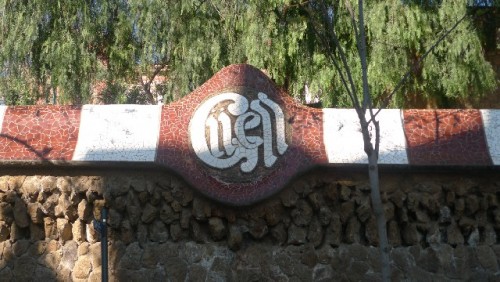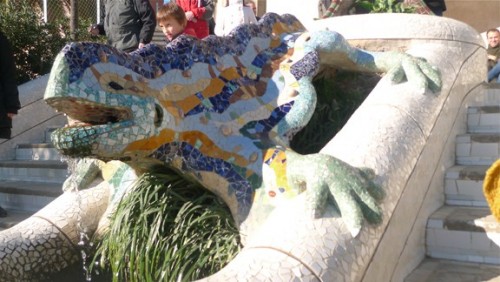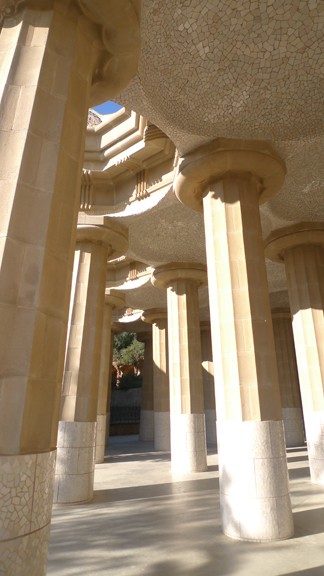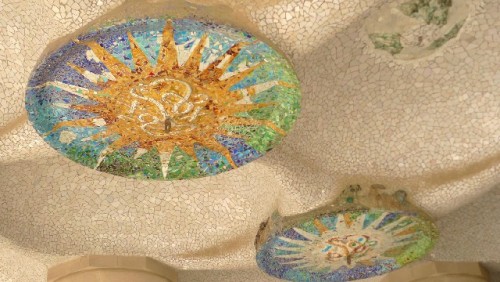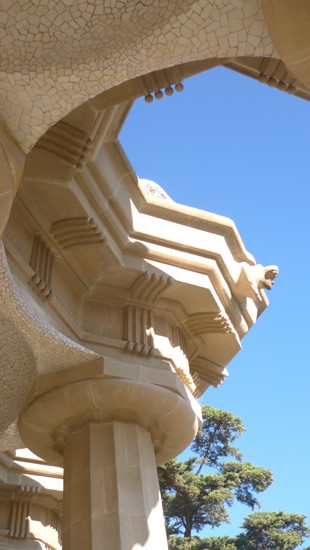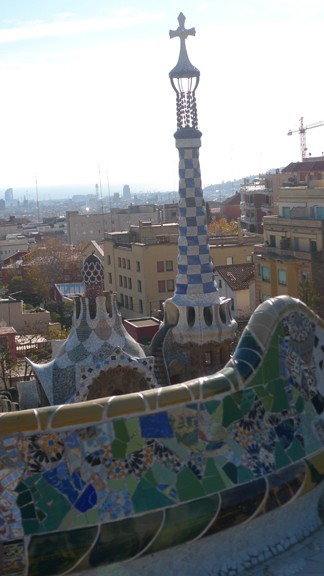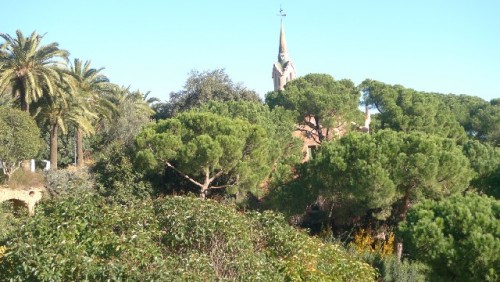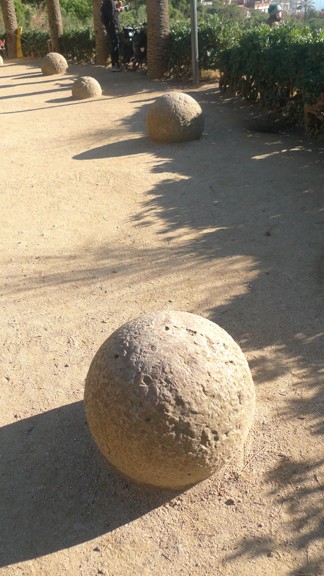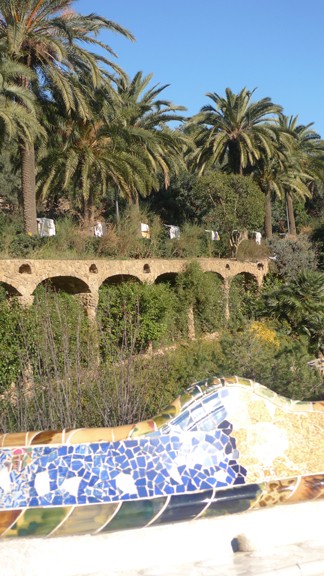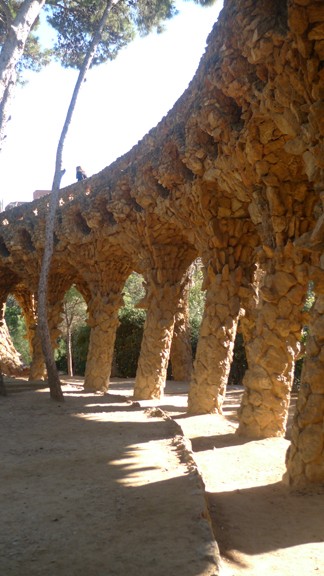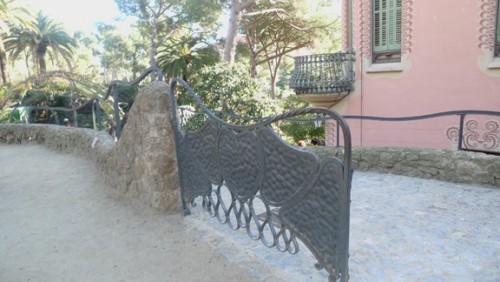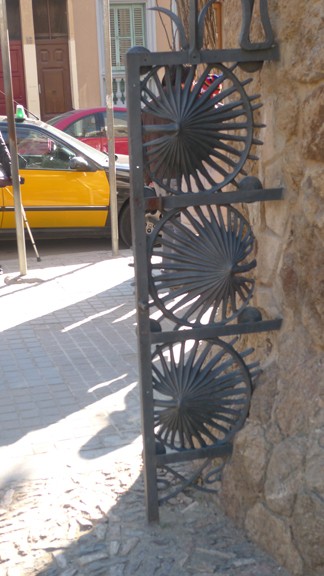Antoni Gaudi's Fantastic Park Guell
Masterpiece of Open Space and Imagination
By: Mark Favermann - Jan 17, 2010
The Catalan architect, Antoni Gaudi (1852-1924) focused his life on his deep Catholic faith and his architectural and design work. He never took time to write, travel, lecture or to even have a social life. He never married. His only friends were collaborators on his projects. With few exceptions, the majority of his works are in and around Barcelona.
It is said that unlike his contemporary architects, Gaudi had a tiny library. The Gaudi scholar Joan Bassegoda I. Nonell says that Gaudi's favorite book on architecture was the tree that he could see through the window of his studio. Rather sternly, Gaudi rejected traditional approaches to architecture and had his own techniques derived from natural forms. In later years, his personal grooming was rather lax. To refer to him as an eccentric would be an understatement.
Gaudi's approach translated into a colorful joy to much of his work, a fantastic organic arrangement of shapes and forms that tend to suggest structure and space as a visual musical harmony, sometimes a bit cacophonic but most often smooth, quite sensual and rather symphonic.
His work was informed by an almost obsessive Catholic mysticism, a love of natural forms, acute sensitivity to ecology and an extremely personal sense of design. Though often classified as a member of the Modernisme style, a Catalan version of Art Nouveau, Gaudi had a unique, even eccentric architectural and design vision.
He was truly a one-off. Even his teachers in architecture school found him challenging to the point of disconcerting as even in his youth he preferred to do things his own way. In fact, it took him a long six years to actually complete his architectural training. And he continued to do things his own seemingly eccentric way until the end of his life.
Gaudi's major patron was the visionary industrialist Eusebi Guell. A true friend, as well as a wealthy patron, Guell worked with Gaudi for over 40 years from 1878 to 1918. With the exception of Gaudi's unfinished cathedral, La Sagrada Familia, Gaudi produced most of his important works with and for Mr. Guell. Many of the basic concepts and themes of Gaudi's projects were inspired by Guell and some of the architect's collaborators. Guell was sophisticated, educated and well read. He loved Greek Mythology and symbolism. Among other mythologically-inspired projects, Park Guell was inspired to become a new city of Delphi.
In 1899, Eusebi Guell purchased a large tract of land on the edge of Barcelona overlooking the city from the Marquis of Mariano. He bought the property because the geographical layout was similar to the Greek city of Delphi. This is where poetry festivals were held to celebrate Apollo. At the foot of Mount Parnassus was the Doric Temple to Apollo where Neptune had placed the evil giant python to protect the sacred underground thermal springs that gave inspiration to the sybles and priestesses.
Guell wanted to link Hellenic symbolism to Christianity and Catalonian nationalism. These were the themes that he commissioned Gaudi to work out at Park Guell. In addition, Guell wanted to develop a new garden city. This was a concept that was theorized by Englishman Ebenezer Howard.
Ebenezer Howard (1850-1928) is known for the publication of Garden Cities of Tomorrow (1898), a prescription of a harmonius living arrangement of man in nature resulting in utopian cities. A movement followed the book's publication that resulted in several Garden Cities in Great Britain, Europe, and North America in the early 20th Century. His Garden Cities Association eventually became the Town and Country Planning Association in the UK.
Guell was influenced by this book as well as Frederick Law Olmstead and even Walt Disney. In 1900, Park Guell was initially set up to be a Garden City but it never gained any traction. The housing portion of the development never took off. The building work was suspended in 1914. Gaudi lived in the show house for many years at the park. This house is now a museum. In 1922, the Barcelona City Council acquired the property to turn it into a public park. In 1984, UNESCO designated it a World Heritage Site.
Gaudi's vision of Park Guell is fantastic. The park is located at the end of a narrow road at the top of a steep hill. Upon arriving at Park Guell, there is visual joy for the visitor. There must have been great excitement and exuberance in the designing of the park by Gaudi and his collaborators-other architects, landscape designers, engineers, artisans and artists. Creatively translating imagination into real elements and a total vision is one of the great aspects of design. And what a design Park actually Guell is!
Initially the development was to include community areas, pathways, avenues and 60 triangular parcels of land that allowed for only a sixth of the space could include buildings or structures. Gaudi scattered throughout this large area symbolic elements that would reflect the values of Christianity and Catalan nationalism. Gaudi made the most of the site's unevenness by converting the park into a purification path. This was achieved by establishing decorative lodges or gatehouses at the park's entrance which were symbolic of the period's frivolity to the chapel at the park's highest point. One achieved this by a path of pilgrimage.
The park is set on a 15 hectare plot of land on a low uneven hill located four kilometers from the old part of the City of Barcelona.
Park Guell is surrounded by a more than two meter high wall that shows the promise of what is inside. Initially the wall was to isolate the complex from the city's noise and distractions. Now it states in ceramic tile expressions of color, excitement and imagination.
To Gaudi, the entrance to the park was an entrance to Paradise on earth. Park Guell was Paradise. By its use of symbols, color and fantasy forms, the entrance was designed to intrigue the passersby with a highly theatrical design. The design was encrypted with symbols that were enigmatic. Gaudi's visual riddle was to use color symbolism and exotic shapes, forms and materials to demarcate the allegorical areas between heaven and earth.
The two gatehouses, one the caretaker's lodge, and the other the administration building, were functional yet designed to delight with organic shapes and prefabricated whimsical elements and colorful detailing. Some of the details included crenellations, cupola endings and decorative eaves.
The architect made use of decorative elements to frame and define pieces of the structure like windows, doors and chimnies. At times, the symbolism and decorative elements were quite personal to Gaudi. An example of this is the treatment of the cupola on the caretaker's lodge. The roof is decorated with upside down coffee cups. Supposedly, this was to symbolize Gaudi giving up drinking coffee.
Decorative metalwork adorns the gates. This use of metal, often abstracted, informed much of Gaudi's work and acted as a material counterpoint to the use of ceramic mosaics, the use of stone, and the often raw and naturalistic use of concrete aggregate.
Park Guell's grand stairway is a monument of great visual impact that is made up of four flights. Three have eleven steps each, and forth has twelve. The stairs are divided symmetrically into two parts by three fountains. Of course, each fountain is symbolic. On the first fountain at the first flight of steps, there is a circle that represents the world along with a compass. This references that Gaudi, the architect, and Guell, the park's visionary benefactor, were involved in a total or universal experience. The symbolism suggests the immensity of the task and vision of both men. The world depicted has cosmic and spiritual implications as well. This fountain is in a trapezoid shape and has a naturalistic design that includes false tree trunks and stalactites.
On the second flight, enclosed in a medallion, is the snake's head under a Catalan flag. There is a combined suggestion of medicine and healing along with nationalism. The snake represented the ancient Greek python mythology as well as perhaps a Biblical reference. This snake could be a reference to Nejustan, the bronze snake that Moses affixed to his staff to ward off dangerous creatures in the desert.
At the third fountain is the famous Park Guell Dragon. This dragon has become an icon of Park Guell. Visitors want there picture taken with it. To Gaudi, the dragon had many important meanings, and the use of it and its various body parts can be seen throughout the master architect's work. Built of prefabricated hollow brick that was covered in vibrant colorful ceramic pieces, the Park Guell Dragon is a surprising and instantly loved fantasy creature.
It has been speculated that Gaudi's obsession with dragons and dragon parts is based in part on his sense of symbolic and mythological conceptualizations or his devout Catholic faith that looked at pure good and evil as exemplified by the Medieval story of Saint George and the Dragon. Other sources could have included the alchemy notion of the salamander as a symbol of fire or the crocodile that was part of the coat-of-arms of the City of Nimes where Gaudi had once studied. The often colorful, undulating, reptilian imagery added power and even motion to the designer's visual repertoire.
It should be pointed out that the mosaic technique of the use of shards of broken ceramic tiles is called trencadis, a Catalan word. It is also referred to as pique assiette. Probably first used in ancient Roman times to more easily cover a rounded shape, the mosaic technique applies pieces of ceramic tiles and sometimes cups. Antoni Gaudi was one of the first to use the technique widely and most skillfully. Much of his architectural work makes use of trencadis. He used the ceramic factory Pujol i Bausis to collect shards for covering three dimensional shapes. The Park Guell Dragon is covered to look like it has scales.
The grand stairway leads to what Gaudi considered a forest of Doric columns. This grouping is one of the few truly classical architectural element arrangement that Gaudi ever did. This was based upon the Temple to Apollo at Delphi in Ancient Greece. The forest of eighty-six columns was to be the market area for the residents of Guell's visionary development project. Located at the second level of the park, Gaudi slanted the outer ring of columns. This was a technique done by Greek architects. Gaudi exaggerated this slant to strengthen the structure and to give it more visual vitality.
Made from rock rubble and mortar, the columns hold up a large square above. The roof of the market is made up of semi-spherical vaults decorated with white trencadis. Four columns were left out by Gaudi. He put rosettes there that colorfully illustrated the four seasons. The cornice at the top of the marketplace is decorated with a series of lion head gargoyles. These serve as downspouts for rain runoff from under the serpentine bench in the main square of the park.
The Park Guell's main square was inspired by city squares in ancient Greece. Gaudi designed this large open space for meeting, play and relaxation. It allowed for social and religious ceremonies to take place. The north wall is configured like an ancient Greek amphitheatre, it is oval in shape with a third of it cut out from the mountainside. The south side is outlined by the spectacular serpentine bench which overlooks Barcelona and the Mediterranean Sea. The serpentine bench is considered one of the great pieces of 20th Century public art. Gaudi's collaborator, architect Josep Maria Jujol designed the trencadis.
The long, undulating bench is a celebration of trencadis technique, changing colors and patterns as well as illumination over the course of a day. The bench is at once art and functional design, sculpture and abstraction. One can easily see how it must have influenced both Cubism and Surrealist aesthetics. Apparently, Gaudi had researched what would make the most comfortable shape for seating in order to positively integrate the seating into the community function of the square. The concave and convex shapes were fabricated elsewhere in brick and then placed at the square. The gloriously worked trencadis was then applied.
Above and adjacent to the square are a number of pathways that lead throughout the park areas. The Rosary Pathway on the east side is the main pathway that was built atop a Roman road that led to another town. Gaudi used rough rounded bollards symbolic of Rosary beads to establish this pathway.
To connect the park areas even with the unevenness of the terrain, Gaudi used a viaduct system that allowed for vehicular and pedestrian movement. Gaudi ingeniously adapted slanted or heliocoidal columns decorated with rough stone from the park to blend in with the natural surroundings.
Though Park Guell never became the garden city that Senor Guell had imagined, the park itself is one of the most fabulous open space configurations in the world. Though Antoni Gaudi's work was reviled as frivolous and considered a dead-end after his death in 1924 by most architects and critics, the brilliance of his work was recognized again since the 1950s. It is interesting that there was no school, no set of acolytes to carry on Gaudi's vision after his death. Perhaps, that was a function of the insular, rather isolated, extraordinary designer himself. Or that the emerging styles were clean and minimalist, not quirkily Baroque. However, almost everyone finds joy in the experience of Gaudi's designs. Park Guell is a place of wonder and genius.

